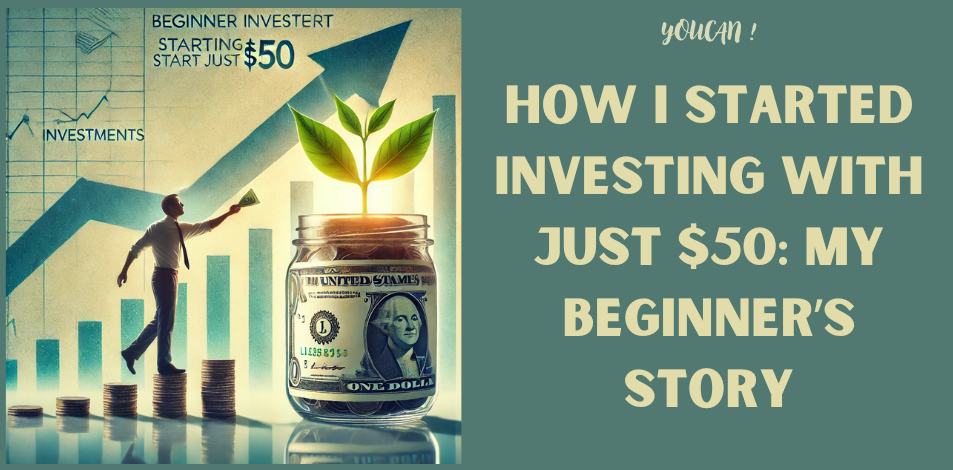
Starting your investing journey doesn’t require a big bank account. I started with just $50 a month, and it completely changed the way I think about finances.
You can start building wealth today by investing as little as $50 in index funds, ETFs, or your employer’s 401(k) plan.
The magic of investing small amounts is consistency and time. The same $50 monthly investment can grow to $75,000 over time thanks to compound interest. I’ve learned that waiting for the “perfect” amount means missing out on potential growth.
Getting started is easier than ever with modern investing apps and platforms that allow you to buy fractional shares.
When I first started, I chose a simple S&P 500 index fund. This gave me exposure to 500 of America’s largest companies without needing a lot of money up front.
Key Takeaways
You can start investing with as little as $50 a month in index funds or ETFs
Small, regular investments grow exponentially through compound interest over time
Modern investing apps make it easy to buy fractional shares with minimal money
Getting Started
Starting your investing journey doesn’t require a lot of money. You can start with as little as $50 and grow your wealth over time with smart choices.
Understanding Investment Accounts
A brokerage account lets you buy and sell investments like stocks and bonds. You can open an account with traditional brokers or through easy-to-use apps like Robinhood or Stash.
An Individual Retirement Account (IRA) offers tax advantages for long-term investing. You’ll save money on taxes while building your retirement nest egg.
Robo-advisors like Betterment and Wealthfront make investing simple. They create and manage a portfolio for you based on your goals and risk tolerance.
Choosing the Right Platform
Small Investing Apps Help You Start Small Apps like Stash and M1 Finance let you buy fractional shares for as little as $5.
Traditional brokers offer more investment options and research tools. Many now offer commission-free trading and no minimum deposits.
Look for platforms with:
No minimum deposits or low minimum deposits
Free trades
Investing in fractional shares
Educational resources
The best option depends on your needs. New investors often prefer robo-advisors or micro-investing apps. More experienced investors may want a full-service broker.
Crafting your investment strategy
A solid investment strategy combines your personal comfort level with risk, diversified investments to protect your money, and clear goals for what you want to achieve.
Assessing your risk tolerance
Your comfort with risk shapes your entire investment strategy. Take an honest look at how you feel about market ups and downs.
If you’re younger, you may feel comfortable taking on more risk because you have time to recover from market downs. Taking more risk often means putting more money into stocks.
If market volatility makes you nervous, you’ll want to focus on safer investments like bonds. There’s nothing wrong with being conservative with your money.
Quick risk assessment:
High risk: 80% stocks, 20% bonds
Medium risk: 60% stocks, 40% bonds
Low risk: 40% stocks, 60% bonds
Create a Diversified Portfolio
Think of diversification as not putting all your eggs in one basket. Start with low-cost index funds that track the entire market.
A simple $50 starter portfolio might include:
$25 in a broad-market stock fund
$15 in an international stock fund
$10 in a bond fund
Dollar-cost averaging by investing $50 regularly each month. This helps smooth out market ups and downs.
Set financial goals
Write down specific financial goals with deadlines. This makes your investing journey more clear and helps you stay on track.
Typical goals:
Save $1,000 for an emergency in 6 months
Amass $5,000 for a down payment on a house in 3 years
Invest $50 a month for retirement
Break larger goals into smaller monthly goals. Track your progress with a simple spreadsheet or investing app.
Make sure your goals align with your life plans. Short-term goals require safer investments, while long-term goals can handle more risk.
Investing Options for Beginners
Starting with $50 opens up many investment paths to grow your money. Many platforms now offer low-cost ways to invest small amounts.
Explore Stocks and Bonds
You can buy fractional shares of individual stocks through apps like Robinhood or Fidelity. That means you can own a stake in big companies like Apple or Amazon for as little as $50.
Treasury bonds are a safer option than stocks. You can buy them directly from TreasuryDirect.gov for as little as $25. They pay interest every six months.
Keep in mind that individual stocks carry more risk than bonds. Your investment can go up or down based on the company’s performance and market conditions.
Tips for Getting Started in Stock Trading:
Research Companies Before You Invest
Start with Well-Known, Well-Established Companies
Use a Commission-Free Trading Platform
Set Up Automated Investments
Consider Mutual Funds and ETFs
Exchange-traded funds allow you to spread your risk across multiple companies. Many brokers offer commission-free ETF trading.
Some mutual funds have high minimums for investments, but companies like Fidelity and Schwab offer funds with no minimums.
Popular Low-Cost Options:
S&P 500 Index Funds
Total Market ETFs
Target-Date Retirement Funds
These funds give you instant diversification. You can own small portions of hundreds of companies with a single purchase.
Real Estate and Alternative Investments
Real Estate Investment Trusts (REITs) trade like stocks and allow you to invest in real estate without buying the buildings.
Real Estate Crowdfunding Platforms like Fundrise accept investments as small as $10 to $50.
Types of Real Estate Investments:
Public REITs
Real Estate Mutual Funds
Crowdfunding Platforms
Real Estate Exchange Traded Funds
REITs are required to pay out 90% of their taxable income as dividends. This can provide a steady stream of income while your investment grows.
Maximize Your Investments
Smart investment strategies can help turn small contributions into significant wealth over time. These techniques work even when you start with just $50.
The Power of Compound Interest
Compound interest makes your money grow faster by generating returns on both your initial investment and past gains. A weekly investment of $50 can grow into thousands of dollars over decades.
Let’s look at a simple example: If you invest $50 each week at an average annual return of 7%, your money could grow to:
5 years: $15,000
15 years: $60,000
30 years: $200,000
This growth happens because your earnings continue to earn you more money. The earlier you start, the longer your money has to accumulate.
Build an emergency fund
Before you invest heavily in the market, create an emergency fund. This protects your investments from unexpected expenses.
Set a goal of saving 3-6 months of living expenses in a high-yield savings account. Start by putting $50 into this fund each week until you reach your goal.
Keep your emergency funds separate from your investment accounts. This separation helps you avoid selling investments in bad times.
Plan for retirement
Focus on tax-advantaged retirement accounts to make your $50 investments work more effectively.
Many employers offer 401(k) plans with matching contributions. This is free money for your future.
If your employer offers a match, contribute enough to get the full match. Then, consider opening a Roth IRA for tax-free growth.
Choose low-cost index funds for your retirement accounts. These funds provide broad market exposure and typically have lower fees than actively managed funds.
Set up automatic transfers of $50 per week to your retirement accounts. Regular contributions help build good investing habits and ensure you don’t miss out on opportunities.




